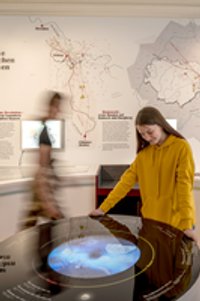Der gegossene irdene Pflanzkasten trägt prominent an der Seite den Pressstempel des Herstellers "Tonwarenfabrik G. G. W. Heber, Dohna i. Sa.". Seine spezielle Form mit separater Ablauf- und Auffangrinne hat die geschützte Musternummer "D.R.G.M. 452616 u. 469572" (Deutsches Reich). Das Adressbuch der Keramischen Industrie, hg. von der Redaktion des "Srechsaal", Coburg 1906 informiert mit folgendem Eintrag: "C. G. Wilhelm Heber Blumentopffabrik in Dohna (P. T. u. E.), Königreich Sachsen. Telegr.-Adr.: Heber Dohna. Telephon: Mügeln (Bz. Dresden) No. 755. Fabrikate und Spez.: Blumentöpfe und andere Gärtnerei-Bedarfsartikel. — 22 Arbeiter. — Dampf- und elektr. Betrieb, eigene Tongruben. — Wurde prämiiert in Dresden 1878 mit Jubiläumsmedaille und 1887 mit Ehrenzeugnis. Besteht seit 1825. "
en









